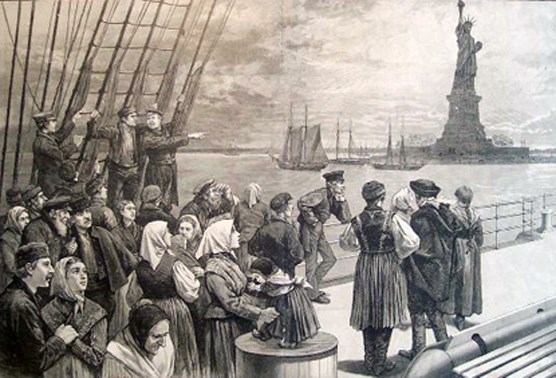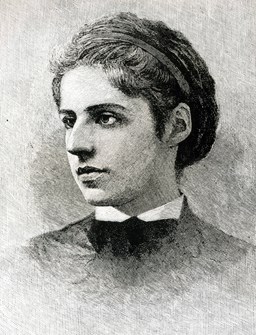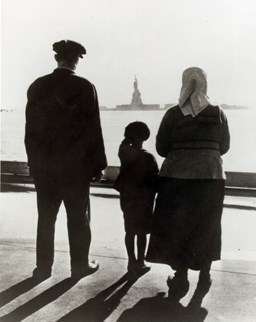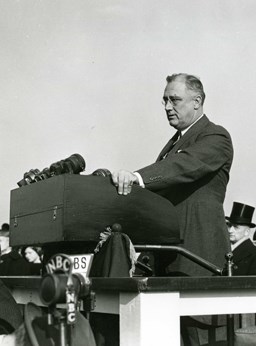The Immigration Problem Again Political Cartoon You Can t Come in The Quote for 1620 Is Full
The Immigrant's Statue

National Park Service, Statue of Freedom NM
Between 1886 and 1924, near 14 million immigrants entered the United states through New York. The Statue of Liberty was a reassuring sign that they had arrived in the land of their dreams. To these anxious newcomers, the Statue's uplifted torch did not suggest "enlightenment," equally her creators intended, but rather, "welcome." Over time, Liberty emerged as the "Female parent of Exiles," a symbol of hope to generations of immigrants.

National Park Service, Statue of Liberty NM
The opening of the immigrant processing station at Ellis Isle in 1892 in the shadow of the Statue of Liberty facilitated an immigrant clan, every bit did the subsequently popularity of Emma Lazarus's poem, "The New Colossus." In 1883, Lazarus donated her verse form, "The New Colossus," to an auction raising funds for the construction of the Statue's pedestal. This poem vividly depicted the Statue of Liberty every bit offering refuge to new immigrants from the miseries of Europe. The poem received little attention at the time, but in 1903 was engraved on a statuary plaque and affixed to the base of the Statue.

National Park Service, Statue of Liberty NM
War tensions in the twentieth century reinforced this connection and further advanced the paradigm of the Statue in the harbor every bit an keepsake of the U.s. as a refuge for the poor and persecuted of Europe, and as a place of unlimited opportunity. Sometimes this image glossed over the very real drawbacks and difficulties of settling in the United States, merely it was a romantic view that was ascendant for decades and continues to persist. In addition to masking immigrant setbacks in the United States, it was a story that tended to favor the European side of immigration at the expense of trials encountered by newcomers from Latin America and Asia.

National Park Service, Statue of Liberty NM
President Franklin D. Roosevelt's 1936 speech in award of the Statue's 50th Anniversary helped solidify the transformation of the Statue into an icon of immigration. In the oral communication he presented clearing as a fundamental role of the nation'south by and emphasized the newcomers' capacity for Americanization.
National Park Service, Statue of Liberty NM
Connections fatigued betwixt the Statue of Liberty and immigration were not always positive. Nativists (Americans who opposed clearing) linked the Statue to immigration most starkly in political cartoons critiquing foreigners' threats to American liberties and values. They portrayed the monument every bit a symbol of a nation besieged past pollution, housing shortages, disease, and the onslaught of anarchists, communists, and other declared subversives. Such images appeared mainly in middle-course popular magazines. They appeared in response to proposed increases in New York'south immigrant processing capacity or in connexion to specific political campaigns. When a new immigrant processing station was proposed on Bedloe's Island in 1890, a cartoon in Estimate depicted the Statue equally "the futurity emigrant lodging house." Expressing fears almost the Statue's literal desecration past newcomers, likewise as fears almost immigrants' threat to the liberty information technology represented, the cartoon showed the monument encumbered past a tenement-style fire escape and clothesline. That aforementioned year, Guess published a scathing prototype of a sneering Statue raising her robe to protect information technology from the newcomers "European Garbage ships" dumped at her anxiety.
Final updated: February 26, 2015
ratchfordginge1989.blogspot.com
Source: https://www.nps.gov/stli/learn/historyculture/the-immigrants-statue.htm
0 Response to "The Immigration Problem Again Political Cartoon You Can t Come in The Quote for 1620 Is Full"
Post a Comment